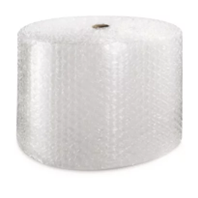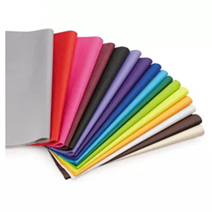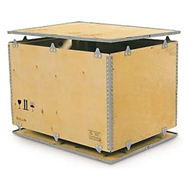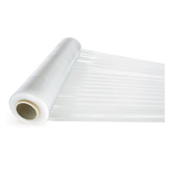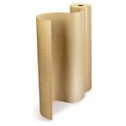Transporting a work of art is a great responsibility. A painting or sculpture is a unique work, make sure it arrives at its destination in excellent condition. This task represents one of the crucial challenges for the sector, as well as considerable public and private investment. As an example, in Spain the well-known Prado Museum has spent more than six million euros when transferring artworks for temporary exhibitions since 2018.
In transportation, packaging for the transport of works of art plays a major role. At RAJA® we offer you this guide so you know the types of packaging adapted to each piece for when you need to transport it, whether for a travelling exhibition, a sale or a change of location.
Packing a framed painting
1-Protective packaging in direct contact with the work
When packing a framed painting, you should wrap it in a scratch-resistant cushioning material to protect the glass of the frame, making it shockproof to prevent damage during transport.
You can choose from the following materials for added protection:
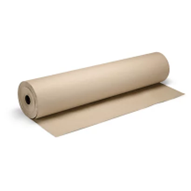
Wrap your paintings in an Eco-Responsible way.
2. Reinforcing the corners
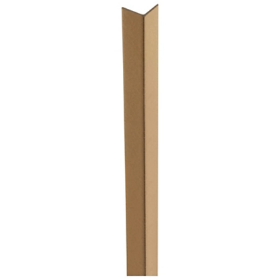
It is advisable to protect the corners with angle brackets to avoid direct impact during transport.
3. Secondary packaging for transporting framed pictures
You should then select the specific packaging for framed pictures that is as close as possible to the size of the work:
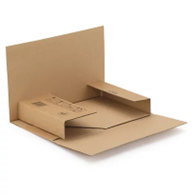
It is very protective because of its cardboard flaps. It also adapts to the thickness of the painting.
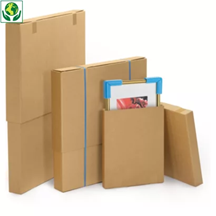
It is adjustable in height and is made of double corrugated cardboard.
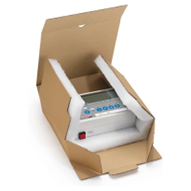
Cardboard box with foam filling
The integrated anti-shock and anti-scratch foam is ideal for large format fragile products.
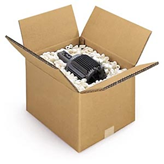
Triple corrugated cardboard box
It is very useful if the frame is very large or if you are packing several artworks at once.
4. External protection and palletizing
5. Shipping labels for transporting artwork

Regardless of the artwork you wish to ship, be sure to stick a “Fragile” label on it to highlight that the product is fragile in handling and transportation. This is one of the best practices indicated for shipping fragile goods.
Packaging for a frameless painting or photograph that can be rolled up
If the work can be rolled up, you can place it between two sheets of tissue paper and cover the cylinder with kraft paper, bubble wrap or foam. Finally, choose a cardboard packaging to store the contents:
Sending tube:

Packaging for a flat artwork
Some paintings or photographs cannot be rolled up for shipping, but can be shipped unframed. In this case you can place the artwork on a piece of rigid cardboard. Then place it in a a padded envelope made of honeycomb paper to transport it safely.
Transporting artwork: step-by-step instructions for sending your paintings
- Place a sheet of kraft paper cut to size on a table.
- Place a sheet of tissue paper on top of the kraft paper.
- Place the painting by placing the visible side of the canvas in contact with the tissue paper. Touching the surface with bare hands is not recommended: use gloves.
- Fold the kraft paper over the back of the board and pin it to the sides. If the work has glass, use angle brackets.
- Place a large sheet of bubble wrap on the table.
- Turn the screen side up, fold and tape the bubble wrap.
- Use a cardboard box adapted to the size of the work to reinforce the protection of the frame. Add a sheet of cardboard to the bottom and insert the work with the canvas side up.
- Put a label on the outside to specify that the contents are fragile.
Packing a sculpture
As each sculpture will have specific dimensions and weights, you will need to choose a packaging for transporting artwork based on these characteristics.
- Packing in a wooden box that exceeds in dimensions between five and ten centimetres on either side of the work is recommended.
- Carefully wrap the work in bubble wrap and place it in the packaging.
- Secure the item using scratch-resistant and shockproof padding such as foam board or kraft paper.
- It is advisable to send the work with three layers of protection to ensure safe shipping. The same goes for shipping antique books.
- Remember that the more fragile or expensive the artwork, the more care must be taken to ensure that it is not damaged during transport.
In the RAJA® online shop you will find everything you need to pack your most valuable items. Check out our section for filling and protecting packaging and place your order at rajapack.co.uk or by calling 707 788 008.











